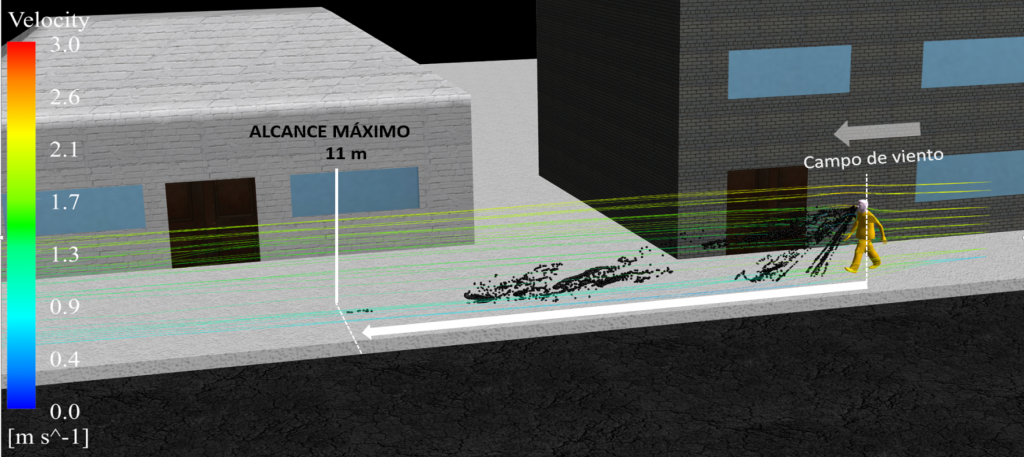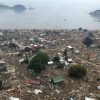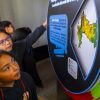By Edgardo Vera / edgarvera@udec.cl
/ Images kindly provided by INCAR
Cover: United Nation Cover Response – Unsplash.com
Currently, the worldwide Cornavirus (COVID-19) pandemic does not have any available vaccine or treatment. Since its appearance in December in Wuhan, China, recommended containment measures worldwide have concentrated on quarantining, contact tracing, and social distancing.
The first available studies were focused on determining the route of viral transmission, which led to the discovery that microdroplets expelled when coughing and sneezing are an important transmission vector.
Until now, investigations on the propagation of respiratory droplets through air mostly addressed interior or exterior situations, without taking into account scenarios representative of real life. Such scenarios would include microclimatological factors, such as the wind, and anthropomorphic factors, such as the height and facial traits of people.
Consideration of these factors is precisely what distinguishes the study titled, “COVID-19: Transport of respiratory droplets in an urban microclimate.” This study was a collaborative effort between the UdeC INCAR, the UdeC Faculty of Engineering, and the engineering company MSET Chile SpA.
Research conducted by Nicolás Guerrero (INCAR, MSET SpA), Pablo Cornejo (INCAR, MSET SpA, UdeC Faculty of Engineering), and José Brito (MSET SpA) determined that microdroplets from sneezes can travel up to 11 meters until touching the ground in urban scenarios with mid-intensity wind.

Research on this topic began before the pandemic, the objective of which being to design computational models that would consider the challenging variables of a city, such as average wind conditions and the interaction of buildings with airflow.
Through this approach, the researchers were able to model a more realistic scenario using tools and software based on numeric simulations. “The original idea was to determine the dispersion of contaminating gasses, but with the appearance of the virus, we applied our research to the sneeze of a normal person,” explains Dr. Pablo Cornejo.
“The obtained results are of relevance not just for measures against COVID-19, but also because there is no report on these types of results in the scientific literature,” highlights Dr. Cornejo, who serves as a researcher for INCAR, is an instructor for UdeC, and is Director of Engineering for MSET Chile SpA.
Dr. Cornejo, an aerospace engineer and member of the “Environmental Sustainability” research line at INCAR, adds that, “A sneeze that interacts with the wind is characterized by two types of particles – ones that are bigger, between 400 and 9000 micrometers, that touch the ground within a distance of 5 meters and that last in the air for 2.3 seconds on average, and ones that are smaller, between 100 and 200 micrometers, that are transported by turbulent wind a distance that fluctuates between 8 and 11 meters, and that touch the ground after 14 seconds on average.”
The study concludes that the radius reached by the respiratory droplets exhaled by a person when sneezing and that can be transported by turbulent wind is up to three times greater than the range recommended for social distancing during the current COVID-19 epidemic. This finding is of vital importance, considering that recommendations made by national health authorities and the World Health Organization only cite a social distance of one to two meters between people.
These findings were recently published in the respected scientific repository MedRxiv, having significant international reach and impacts. Given the contingency measures against COVID-19, understanding what happens with the propagation of microdroplets in open spaces is a relevant question, especially when thinking that people cannot be confined to their homes indefinitely and that a significant portion of the population has not been able to adhere to strict quarantine measures.
“Given the uncertainty of possible infection by this transmission route, [our] efforts help clarify the possible need for the population to adopt preventive self-care measures and for generally stricter policies of social distancing,” highlights Dr. Cornejo.
More information: pabcornejo@udec.cl
Last modified: 29 de agosto de 2025






